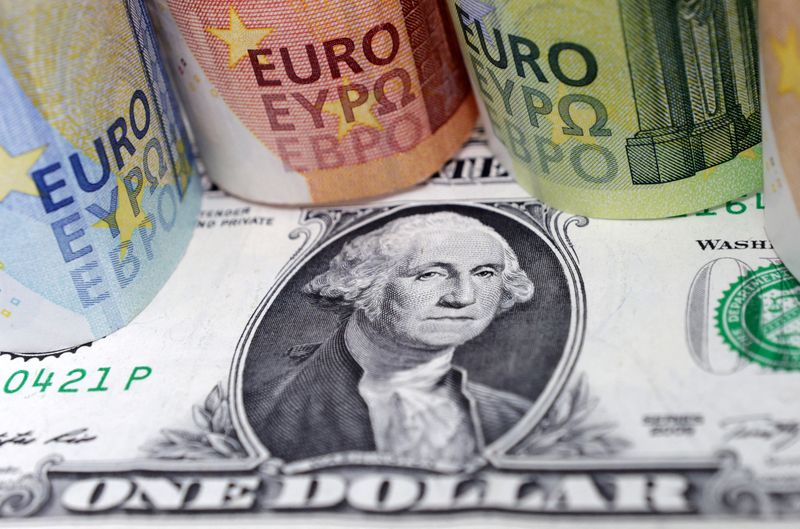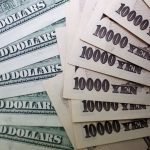TOKYO/LONDON (Reuters) – The U.S. dollar stalled near a three-month high against other major currencies on Thursday, underpinned by expectations for a slower pace of interest rate cuts by the Federal Reserve, while the euro and Japanese yen climbed off recent lows.
The euro edged up 0.2% to $1.0799, a day after slumping to a nearly four-month trough of $1.07612. A survey showed euro zone business activity stalled again last month, but the contraction in Germany, Europe’s largest economy, was less steep than the previous month.
“We’re getting a bit of a bounce without getting too excited. I don’t think this really stops the market from pricing in further cuts from the ECB,” said Kenneth Broux, head of corporate research FX and rates at Societe Generale (OTC:SCGLY).
Traders have ramped up bets on faster and potentially bigger rate cuts from the European Central Bank after a host of policymakers warned about the risk of undershooting the central bank’s 2% inflation target – a stark change in tone after a two-year campaign to rein in prices.
On Wednesday, ECB President Christine Lagarde sounded measured, saying policymakers needed to be “cautious” in deciding policy, although colleague Mario Centeno suggested rates could be cut by 50 basis points at the central bank’s next meeting on Dec. 12.
“The risk is to the downside into the U.S. election (as) we could keep positioning for Trump reflation and that means higher U.S. yields relative to German yields,” Broux said on the euro outlook.
“There’s no real reason to expect that to converge anytime soon and that should keep euro/dollar weak in the near-term and the dollar just remains strong overall.”
The dollar index, which measures the currency against six others including the euro and yen, stood at 104.18, not far from the overnight high of 104.57, a level last seen on July 30.
A spate of robust economic data and some hawkish comments from Fed officials have tempered bets for U.S. monetary easing over the coming months, according to CME Group’s (NASDAQ:CME) FedWatch Tool.
Expectations for a total of 50 basis points of rate reductions over the remaining two Fed meetings of 2024 have dropped to about 68% from about 72% a week ago. Traders currently lay 29% odds on a single 25 basis-point cut by year-end, and 2% odds on no change.
The dollar has also benefited from a rise in market expectations for a victory next month by Republican candidate and former president Donald Trump, which would likely bring about inflationary policies such as tariffs.
Sterling firmed 0.3% to just under $1.30, after dipping to a more than two-month low of $1.29080 on Wednesday.
YEN FINDS FLOOR
The yen got some respite, after slumping to late-July lows of 153.19 yen, as Japan’s finance minister said officials “are watching exchange-rate moves with heightened vigilance”, invoking the risk of intervention. The Japanese currency was last changing hands at 151.965 per dollar.
Japan’s coalition government – under new Prime Minister Shigeru Ishiba – is at risk of losing its majority parliament in Sunday’s election, recent polls show, and any rise in political uncertainty would further complicate the Bank of Japan’s plans for monetary policy normalisation.
BOJ Governor Kazuo Ueda said overnight it was “still taking time” to sustainably achieve the central bank’s 2% inflation target, and signalled that rate hikes would be done “cautiously and gradually”. But he also warned of the cost of moving too slowly, which could encourage speculators to push the yen lower.

The central bank’s next policy decision is on Oct. 31, and it is widely expected to stand pat this time.
“The Ishiba administration would need to stop USD/JPY going higher with speed, but I don’t think either MOF (Ministry of Finance) or the cabinet would want to actually intervene,” said Shoki Omori, chief Japan desk strategist at Mizuho Securities, adding the dollar could eventually test the 160 yen level.
To read the full article, Click Here

